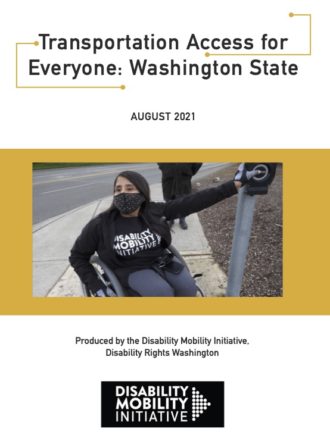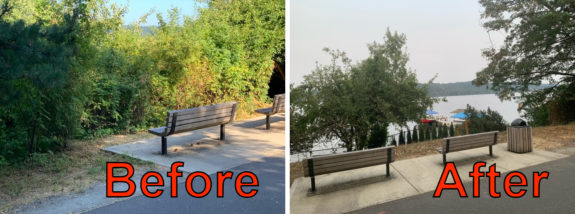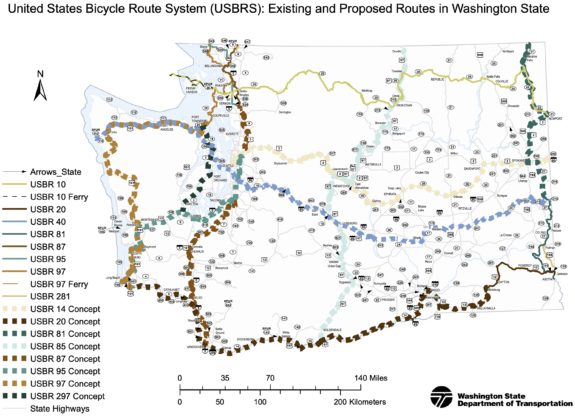
Disability Rights Washington released a report this week that is so good it should be considered mandatory reading for everyone working in transportation in our state. The word “report” doesn’t really do it justice because “Transportation Access for Everyone: Washington State” is filled with personal stories from people all over the state who are being left behind or seriously inconvenienced daily by our transportation infrastructure and services. The report then summarizes some of the issues people face and provides a non-exhaustive list of recommendations for politicians, transportation departments and transit agencies.
But even if you aren’t a politician or transportation staffer, the personal stories are very compelling. The term “disability” covers such a wide range of lived experiences, and the barriers people face are often caused by a lack of consideration in planning and implementation of policies, priorities, services and infrastructure design. Simply following the bare minimum to meet the Americans with Disabilities Act legal requirements is not good enough. Earmarking some funding for paratransit in a budget overflowing with highway spending is not good enough, either. Instead, we should work towards “radical inclusion,” which means being familiar with and serving as many people’s needs as possible. From the report authors:
We did not intend to create an exhaustive list of the needs of transit-reliant disabled people or a complete set of policy recommendations. Instead, this report should
be viewed as a starting point for policy- makers, elected officials, transit agencies, transportation departments, transportation advocates and civil and transportation engineers, and those in related fields, to humbly perceive their ignorance of the daily experiences of people who live differently than them and understand the urgent need for “radical” inclusion of disabled nondrivers in the planning processes across every level of our transportation systems and to begin, with urgency, to practice that inclusion.
While the report has a lot of recommendations, it makes two “major actions”:
- Shift resources to prioritize funding accessible pedestrian infrastructure and reliable transit service.
- Look to nondrivers as transportation decision makers and experts.
Big thanks to Disability Rights Washington and its Disability Mobility Initiative, led by Anna Zivarts, for this report. Thanks also to the more than 125 disabled nondrivers who shared their stories with the report’s authors. Check it out here.











